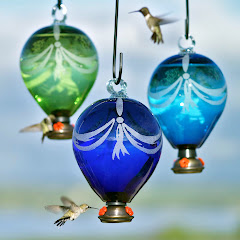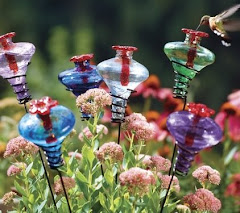I remember going on school field trips to the zoo and getting to see hummingbird eggs (about the size of my pinkie fingernail) and thinking "they're so teeny!" Learning from the zoologist about their flying backwards, "drinking" from flowers, and of course their stunning plumage it was obvious I was going to love these birds always.
When you think of a hummingbird the picture that probably pops in your head is the Ruby-throated hummingbird. It's the archetypal image, the hummingbird you'll see on most t-shirts, mugs, postage stamps, greeting cards, you name it. The Ruby Throat is the most recognized hummer, especially since for most the U.S. (every state east of the Mississippi River) it is the only hummingbird you'll see flying around.
The Ruby-throated hummingbird is one of sixteen species that breed and live/migrate in the United States, but its migration keeps them on the eastern side of The States. If you live on the western side, there are so many other hummers to acquaint yourself with - and we'll start introducing you to these not-so-known wonders! Watch this blog for more info!
Of course outside the U.S. there are even more spectacular species, especially in South America, all which have mind-boggling characteristics. Here are some more exotic species and some cool fast facts:
- The Bee Hummingbird (the smallest BIRD in the world - not just hummingbirds) lives in Cuba and is literally the size of a bumblebee. Small!
- The Giant Hummingbird lives in South America and can reach up to 8 inches in size. That's smaller than most songbirds but a true Giant amongst hummers!
- The Marvellous Spatuletail from Peru (as seen in the John Gould illustration below) only has four tail feathers. Males have two feathers that swoop to bright violet medallion ends, and they can move these feathers independently!





No comments:
Post a Comment